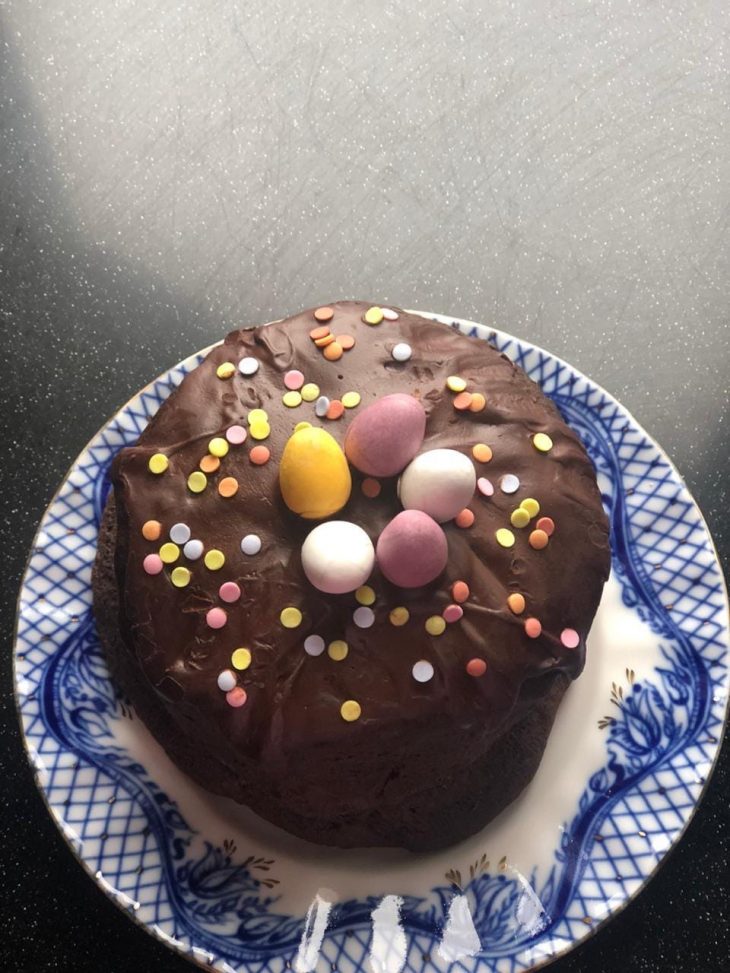
Easter Kulich
My friends with whom I share a flat are students from Italy. For four months now, I have been learning a lot about Italy, about the traditions, holidays, and customs of that country. And we often cook traditional dishes of our countries. I have tried probably more than ten types of pasta. I, in turn, have cooked pancakes and dumplings.
Almost all Italians are Catholic, so for the 17th of April, Easter, I decided to bake for them one of the main Easter attributes, the kulich. I’d love to share a simple recipe with you, and you can try it too.
To start with, I will share a few secrets with you:
1. The products must be about the same temperature, so it’s best to get everything you need out of the fridge beforehand.
2. Sift the flour gently, preferably more than once. This will oxygenate it and the cake will turn out very fluffy.
3. If possible, replace the dry yeast with live yeast. This will keep the cake soft for longer.
3. Minimize the spices. Firstly, many of them stain the dough, which is unnecessary in this case. Secondly, there is no need to interfere with the natural taste of the real Easter kulich.
4. There should be no draughts in the room where you make the cakes. This dough is basically afraid of temperature changes, which is why it is better to leave it to infuse in the kitchen, and not place it in a warm oven.
5. Under no circumstances should you take hot cakes out of the mould – they will need to cool down completely first. Better still, wrap them in a towel and lay them on their sides, rolling them over from time to time.
6. Cover the cooled cakes with the glaze.
7. When kneading the dough on the table it is better to grease it with butter rather than sprinkle it with flour. If you do so, the dough will take up the flour, which may be excessive, and the cakes will not be so fluffy.
You will need for the dough:
flour – 800-100 gr.
sugar – 250 gr.
sultanas – 100 gr.
milk – 250 ml.
vegetable oil – 10 ml.
hen’s egg – 4 units.
yeast – 1 tbsp.
vanillin – 1 tsp.
You will need for the glaze:
icing sugar – 150 gr.
white chicken egg – 2 pcs.
lemon juice – 1 tbsp.
patisserie sprinkles.
We need for greasing:
milk 2 tbsp.
One hen egg yolk.
Preparation steps.
Fill sultanas with hot water and leave for 10 minutes to soften.
Combine the eggs with the sugar and vanilla. Beat with a mixer until homogeneous. Then add milk – it should be lukewarm – and dry yeast. Stir the mixture.
Sift flour into the mass. Stir while stirring to remove lumps more easily. Knead the dough.
Drain sultanas and coat in flour. Grease a table and hands with vegetable oil and place the dough on the table.
Flatten it into a rectangle and arrange the sultanas in the center. Bring the edges of the dough towards the center and knead to evenly distribute the sultanas.
Place the dough in a pan (grease with butter), cover with something and leave to rise in a warm place for an hour.
Fill the dough into the paper loaf forms about 1/3 full, cover with a towel and leave to rise for another half hour.
Mix the egg yolk with the milk in a glass and brush the cakes with this liquid substance. Bake at 170 degrees for 40-50 minutes.
Whisk 2 egg whites then add the icing sugar and continue to whisk. When stiff pour in lemon juice and continue whisking to a stiff consistency.
Glaze each finished Easter cake with the egg white and then sprinkle with the sprinkles.
Bon appetit! Happy Easter!
- Learning and Growth Mindset - 13th September 2024
- Another successful meeting – IBSEN meets XAMK in Kouvola, May 2024 - 16th May 2024
- Blending and joining the Finnish work life - 8th December 2023
